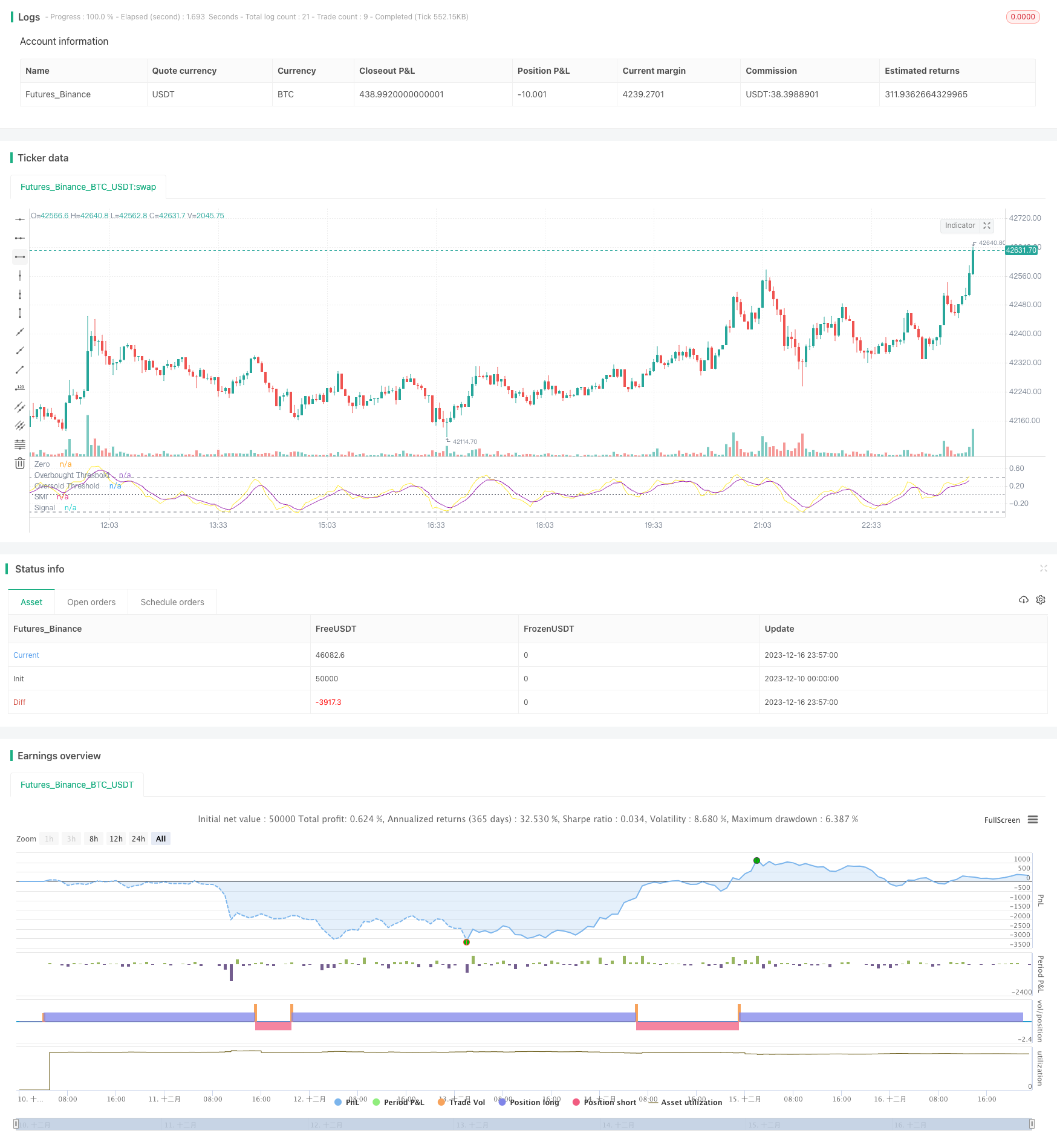
概述
本文将深入分析一种基于自适应指数平滑移动平均线(Adaptive Exponential Moving Average, AEMA)的量化交易策略。该策略运用随机动量指数指标(Stochastic Momentum Index,SMI)的无穷波动率形式,结合指数移动平均线作为信号线,设定可自定义的超买超卖阈值,以提高交易执行的概率。
策略原理
该策略使用两种不同长度的SMI,即一短长度和一长长度,两者跨度的差异能产生交易信号。此外,策略还利用一条指数移动平均线作为信号线。当短周期SMI上穿长周期SMA时做多,而当短周期SMI下穿长周期SMA时做空。为滤除假信号,多头入场信号仅在SMI低于超卖线且信号线也低于超卖线时出现;空头信号则要求SMI高于超买线且信号线也高于超买线。该双重条件设置使策略对突发事件更加敏感,同时也能有效避免虚假突破。
策略优势
该策略最大的优势在于其自适应性。策略使用可自定义的超买超卖阈值来动态调整做多做空的标准。这种机制让策略参数可以根据不同市场环境进行调整优化,从而适应更广泛的行情类型。此外,SMI无穷波动率形式也增强了策略的灵敏度和及时性。相比传统SMI,它具有更高的去噪效果和更小的滞后。这使策略能够快速响应突发事件,捕捉短线交易机会。
策略风险
该策略最大的风险在于其对参数设置的依赖性。如果参数设置不当,将很容易产生大量的无效交易信号。此外,SMI作为一种脉冲型指标,对随机震荡市场的表现并不理想。当出现价格剧烈波动的趋势性反转时,策略也很容易被套住。为控制这些风险,建议采用严格的风险管理手段,同时调整参数以适应不同的市场环境。一些可行的优化方向将在下文中提出。
策略优化方向
该策略仍有几个可优化的方向。第一,可以测试SMA长度的不同组合,找到最佳参数对。第二,可以考虑在入场点附近设置止损,以控制单笔损失。第三,可以结合其他指标,如RSI、布林带等来设定动态的超买超卖线。第四,可以通过机器学习算法自动优化参数。第五,可以将策略集成到多因子模型中,以提高稳定性。
总结
本文深入剖析了一种自适应SMI无穷交易策略的原理、优势、风险和优化方向。该策略运用自适应阈值和指数移动平均线进行信号过滤,能有效抓取市场短线机会。尽管存在一定参数依赖性,但通过严格的风险控制和多方面优化,该策略仍具备相当的实用价值。相信在量化交易的实践中,它能发挥重要作用,为交易决策提供有效支持。
/*backtest
start: 2023-12-10 00:00:00
end: 2023-12-17 00:00:00
period: 3m
basePeriod: 1m
exchanges: [{"eid":"Futures_Binance","currency":"BTC_USDT"}]
*/
// © DraftVenture
//@version=5
strategy(title="Adaptive SMI Ergodic Strategy", shorttitle="Adaptive SMI Strategy", overlay = false)
longlen = input.int(12, minval=1, title="Long Length")
shortlen = input.int(5, minval=1, title="Short Length")
siglen = input.int(5, minval=1, title="Signal Line Length")
overS = input.float(-0.4, title = "Oversold", step = 0.01)
overB = input.float(0.4, title = "Overbought", step = 0.01)
erg = ta.tsi(close, shortlen, longlen)
sig = ta.ema(erg, siglen)
plot(erg, color = color.yellow, title = "SMI")
plot(sig, color = color.purple, title="Signal")
hline(0, title = "Zero", color = color.gray, linestyle = hline.style_dotted)
h0 = hline(overB, color = color.gray, title = "Overbought Threshold")
h1 = hline(overS, color = color.gray, title = "Oversold Threshold")
fill(h0, h1, color=color.rgb(25, 117, 192, 90), title = "Background")
longEntry = ta.crossover(erg, sig) and erg > overS and sig < overS
shortEntry = ta.crossunder(erg, sig) and erg < overB and sig > overB
if longEntry
strategy.entry("Long", strategy.long)
if shortEntry
strategy.entry("Short", strategy.short)
// ______ _________
// ___ //_/__ __ \
// __ ,< __ /_/ /
// _ /| | _ ____/
// /_/ |_| /_/